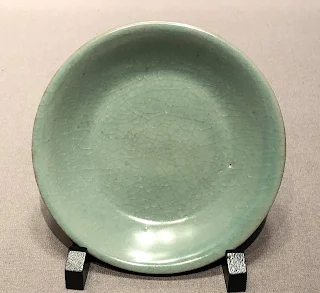Look at these pink and red plants! Such bright and lively colors in winter makes me happy!
 |
| Ornamental cabbage or "leaf peony" in Japanese in Ueno peony garden |
Hi! I'm Kei Narujima. This is a blog about flowers🌼 and bugs🐛 (and sometimes netsuke, i.e., miniature sculpture) that make you smile😊 (or so I hope)!! こんにちは。花や虫(そして時々根付)などについて書いてます😊。税務英語については https://zeimueigo.blogspot.com/ に移行しました。
 |
| Karamon gate of Ueno Toshogu shrine |
 |
| Karamon - Chinese style gate |
 |
| Bronze lanterns |
 |
| Five story pagoda surviving anti-Buddhist movement Owner changed from Ueno Toshogu shrine → Kaneiji temple → Tokyo |
 |
| This brings you wealth! |
 |
| Manryo (10,000 ryo; 万両) or Christmas berry |
 |
| Senryo (1,000 ryo; 千両) or sarcandra glabra or nine-knotted flower |
 |
| Hyakuryo (100 ryo; 百両) or ardisia crispa |
 |
| Juryo (10 ryo; 十両) or ardisia japonica or marlberry |
 |
| Wintersweet or Japanese allspice |
 |
| Chimonanthus praecox |
 |
| Miniature daffodils |
 |
| Miniature daffodils |
 |
| Peony named "Okan" or "High noon" |
 |
| Flower whose name I don't know |
Seidai 聖代
|
Kao 花王
|
Gyoku tenshu 玉天集
|
Renkaku 連鶴
|
Shimadaijin 島大臣
|
Shimanishiki 島錦
|
Jitsugetsu nishiki 日月錦
|
Renown
|
Shima no fuji 島の藤
|
Yachiyo tsubaki 八千代椿
|
Kamata fuji 鎌田藤
|
Fuji no kaori 藤の香
|
Okan (黄冠) or High noon
|
Higurashi 日暮
|
Daikikou 大喜紅
|
Yukigasane 雪重
|
Taiyo 太陽
|
Muramatsu no yuki 村松の雪
|
Muramatsu zakura 村松桜
|
Kinkaku 金閣
|
Mikuni no akebono 御国の曙
|
Mikuni no hata 御国の旗
|
Shikoden 柴紅殿
|
Hoki 芳紀
|
Kokuryu nishiki 黒龍錦
|
Kinkaden 金華殿
|
Gekkeikan 月桂冠
|
 |
| A signature board of stamps of seven lucky Japanese gods |
God/goddess
|
Home country
|
Temple
|
Description
|
| 1. Benzaiten 弁財天 (only goddess) |
India
|
Benzaiten (弁才天 or 弁財天) has her origin in Hinduism. She is the only goddess, representing financial fortune, talent, beauty and music, and the patron of artists, writers, dancers, and geisha. | |
| 2. Daikokuten 大黒天 |
India
|
Daikokuten (大黒天) is the god of commerce and prosperity and the patron of cooks, farmers, bankers, and the protector of crops. He is also considered a demon hunter. | |
| 3. Ebisu ゑびす |
Japan
|
Ebisu (恵比寿), the only god who originates in Japan, is the god of prosperity and wealth in business, and of plenitude and abundance in crops, cereals and food. | |
| 4. Bishamonten 毘沙門天 |
India
|
Bishamonten (毘沙門天) whose origin is traced back to Hinduism, is the god of fortune in war and battles and the protector of those who follow the rules and behave appropriately. | |
| 5. Hotei 布袋 |
China
|
Hotei (布袋) is the god of fortune, the guardian of children, and the patron of diviners and barmen. He is also the god of popularity and often depicted as a fat, smiling, bald man with a curly mustache. | |
| 6. Jurojin 寿老神 |
China
|
Jurojin (寿老人) is the god of the elderly and longevity in Japanese Buddhist mythology, based on a real person who lived in ancient times and was about six feet tall with a very long head and a long white beard. | |
| 7. Fukurokuju 福禄寿 |
China
|
Fukurokuju (福禄寿) has his origin in China. He is the god of wisdom, luck, longevity, wealth and happiness and characterized by the size of his head almost as large as the size of his whole body. |
 |
| Kawaii Japanese doll |
 |
| Kyoto doll holding Daruma dolls |
 |
| Kawaii Kyoto doll trio |
 |
| Kyoto doll holding chimaki amulet |
 |
| Kyoto doll holding fortune cat |
 |
| Jar Opaque red glass on yellow glass |
 |
| Candlesticks Colored glass |
 |
| Lobed bowl Opaque blue glass |
 |
| Vase with long neck Transparent blue glass |
 |
| Vase with long neck Blue green glass |
 |
| Vase with long neck Milky white glass |
 |
| Vase Opaque yellow glass |
 |
| Dish, celadon glaze, in 11th to 12th century Northern Song dynasty |
 |
| Bowl, celadon glaze, in 12th to 13th century Southern Song dynasty |
 |
| Netsuke "Ancestor Fukurokuju" Is he a Jedi? |
 |
| Do you know what "タタミ" means? |
英語の後に日本語が続きます。 I know fish mint (Houttuynia cordata) is invasive and smelly but the plant's color contrast always attracts me and its po...
